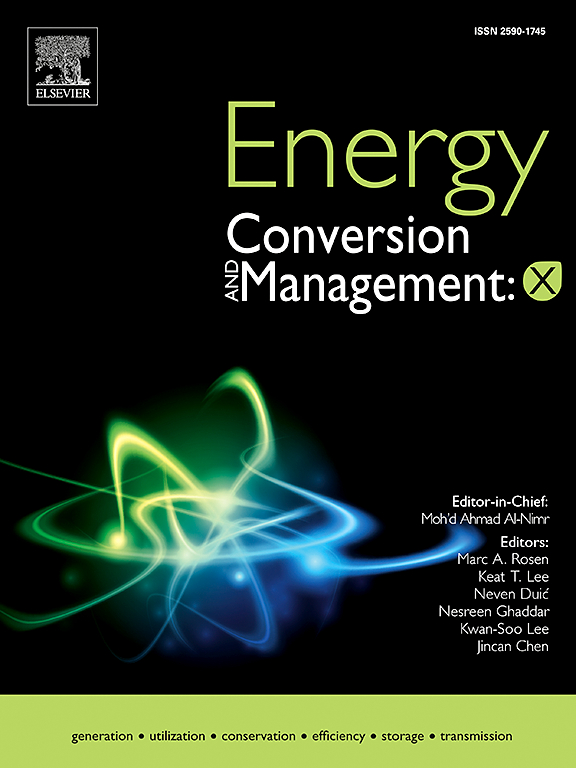一种新型的基于教-学的混合优化和简化形式方法,用于光伏组件性能的高效参数提取和准确预测
IF 10.9
1区 工程技术
Q1 ENERGY & FUELS
引用次数: 0
摘要
太阳能电池的精确建模和等效模型参数的精确识别是预测最大功率输出的关键。提出了一种新的光伏组件模型5个参数提取与预测的混合方法。该方法将基于最小二乘法的解析技术与基于教-学的优化算法相结合,将参数数量减少到2个。该方法有效地解决了光伏参数提取的复杂性,形成了高维的研究空间,提高了效率和准确性。采用来自不同模块技术的实际数据验证了所提出的方法,得到了较低的均方根误差值:Photowatt-PWP201模块为0.002133 A, STP6-120/36模块为0.001721 A, RTC电池为0.000775 A, STM6-40/36为0.013969 A,单晶模块为0.0152 A,测量结果来自罗马尼亚布加勒斯特国家电气工程研究与发展研究所光伏系统实验室。结果表明,该方法对国家可再生能源实验室的单晶和多晶两种组件技术在参考日的最大功率归一化误差低于2.96%。在两个地点一年的测量值和预测值之间的相关性一直很高,决定系数接近0.9987。本文章由计算机程序翻译,如有差异,请以英文原文为准。
A novel hybrid Teaching-Learning-Based optimization and Reduced-Form approach for efficient parameter extraction and accurate prediction of photovoltaic module performance
Accurate modeling of solar cells and precise identification of their equivalent model parameters are crucial for predicting maximum power output. This paper presents a novel hybrid method for extracting and predicting the five parameters of a photovoltaic module model. The proposed approach integrates an analytical technique, based on the least square method, to reduce the number of parameters to two with the teaching–learning-based optimization algorithm. This method effectively addresses the complexity of photovoltaic parameter extraction, which generates a high-dimensional research space, enhancing efficiency and accuracy. The proposed method was validated using real data from various module technologies yielding lower root mean square error values: 0.002133 A for the Photowatt-PWP201 module, 0.001721 A for the STP6-120/36 module, 0.000775 A for the RTC cell, 0.013969 A for the STM6-40/36 and 0.0152 A for the monocrystalline module measured at the Laboratory of Photovoltaic Systems, National Institute of Research and Development in Electrical Engineering in Bucharest, Romania. Furthermore, the results demonstrate that this method achieves lower normalized error of maximum power below 2.96% on the reference day for two module technologies, monocrystalline and polycrystalline, from the national renewable energy laboratory. The correlation between measured and predicted maximum power values over one year at two locations was consistently high, with determination coefficients close to 0.9987.
求助全文
通过发布文献求助,成功后即可免费获取论文全文。
去求助
来源期刊

Energy Conversion and Management
工程技术-力学
CiteScore
19.00
自引率
11.50%
发文量
1304
审稿时长
17 days
期刊介绍:
The journal Energy Conversion and Management provides a forum for publishing original contributions and comprehensive technical review articles of interdisciplinary and original research on all important energy topics.
The topics considered include energy generation, utilization, conversion, storage, transmission, conservation, management and sustainability. These topics typically involve various types of energy such as mechanical, thermal, nuclear, chemical, electromagnetic, magnetic and electric. These energy types cover all known energy resources, including renewable resources (e.g., solar, bio, hydro, wind, geothermal and ocean energy), fossil fuels and nuclear resources.
 求助内容:
求助内容: 应助结果提醒方式:
应助结果提醒方式:


